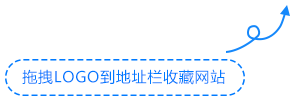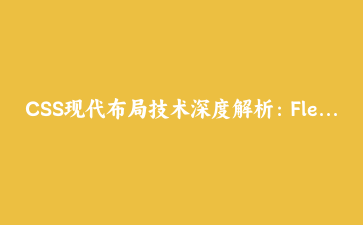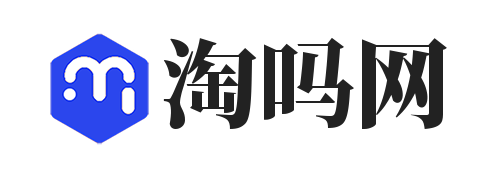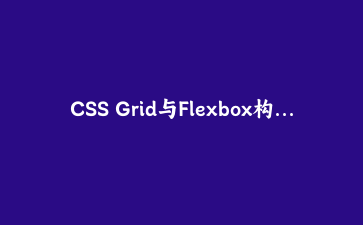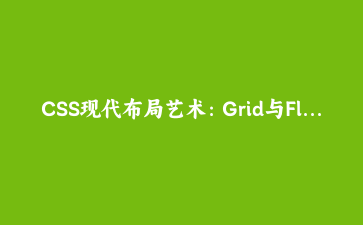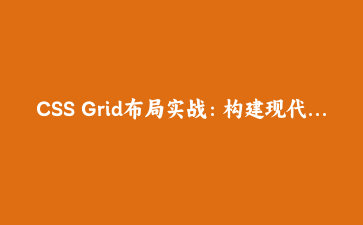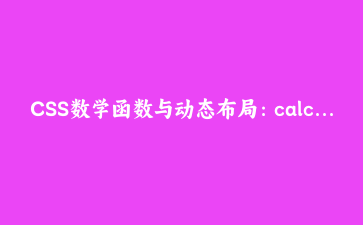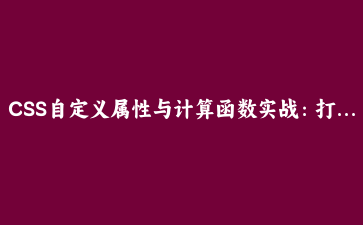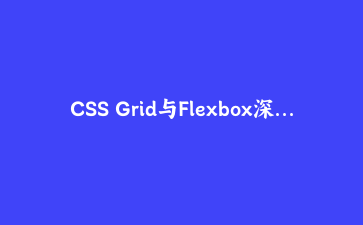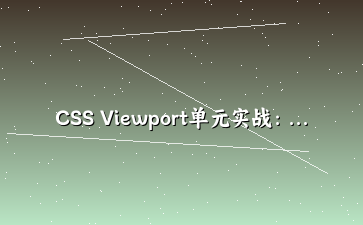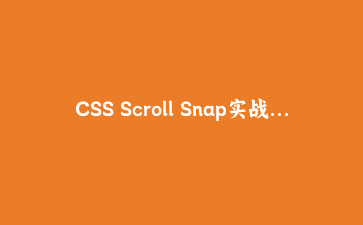发布日期:2023年11月
阅读时间:12分钟
引言:现代CSS布局的演进与融合
在当今的Web开发环境中,CSS布局技术已经从传统的浮动和定位发展到现代的Flexbox和Grid系统。然而,真正的布局艺术在于如何巧妙地将这些技术结合使用,创造出既灵活又强大的布局解决方案。本文将深入探讨Flexbox与Grid的混合布局策略,并通过完整的实战案例展示如何构建复杂的现代网页布局。
核心技术概念对比
Flexbox:一维布局专家
- 主轴与交叉轴:基于单方向的布局系统
- 弹性项目:容器内项目的动态调整
- 对齐控制:justify-content, align-items的强大对齐能力
- 最佳场景:导航菜单、卡片布局、表单元素排列
CSS Grid:二维布局大师
- 网格轨道:明确定义的行和列
- 网格区域:精确的二维空间控制
- 模板布局:grid-template-areas的可视化布局
- 最佳场景:整体页面布局、复杂网格系统、杂志式排版
混合布局策略与最佳实践
策略一:Grid宏观布局 + Flexbox微观调整
使用Grid定义整体页面结构,在网格区域内使用Flexbox进行精细控制:
.page-layout {
display: grid;
grid-template-areas:
"header header"
"sidebar main"
"footer footer";
grid-template-columns: 250px 1fr;
grid-template-rows: auto 1fr auto;
min-height: 100vh;
}
.header {
grid-area: header;
display: flex;
justify-content: space-between;
align-items: center;
padding: 1rem 2rem;
}
.sidebar {
grid-area: sidebar;
display: flex;
flex-direction: column;
gap: 1rem;
}
.main-content {
grid-area: main;
display: flex;
flex-wrap: wrap;
gap: 1.5rem;
align-content: flex-start;
}
.footer {
grid-area: footer;
display: flex;
justify-content: center;
align-items: center;
}策略二:嵌套Grid与Flexbox的协同工作
在复杂的组件内部,根据需求选择合适的布局技术:
.dashboard {
display: grid;
grid-template-columns: repeat(auto-fit, minmax(300px, 1fr));
gap: 2rem;
padding: 2rem;
}
.dashboard-widget {
display: flex;
flex-direction: column;
border-radius: 12px;
overflow: hidden;
}
.widget-header {
display: flex;
justify-content: space-between;
align-items: center;
padding: 1rem;
background: #f8f9fa;
}
.widget-content {
display: grid;
grid-template-columns: 1fr 1fr;
gap: 1rem;
padding: 1rem;
flex-grow: 1;
}
.metric-item {
display: flex;
flex-direction: column;
align-items: center;
justify-content: center;
text-align: center;
}实战案例:构建现代电商产品展示页面
创建一个完整的电商产品展示页面,展示混合布局技术的实际应用:
HTML结构
<div class="ecommerce-page">
<header class="page-header">
<div class="logo">ShopMall</div>
<nav class="main-nav">
<ul class="nav-list">
<li><a href="#" rel="external nofollow" rel="external nofollow" rel="external nofollow" rel="external nofollow" rel="external nofollow" >首页</a></li>
<li><a href="#" rel="external nofollow" rel="external nofollow" rel="external nofollow" rel="external nofollow" rel="external nofollow" >分类</a></li>
<li><a href="#" rel="external nofollow" rel="external nofollow" rel="external nofollow" rel="external nofollow" rel="external nofollow" >促销</a></li>
</ul>
</nav>
<div class="user-actions">
<button class="cart-btn">购物车</button>
<button class="login-btn">登录</button>
</div>
</header>
<main class="page-main">
<aside class="filters-sidebar">
<div class="filter-group">
<h4>价格范围</h4>
<!-- 筛选器内容 -->
</div>
</aside>
<section class="products-grid">
<div class="product-card">
<div class="product-image">
<img src="product1.jpg" alt="产品图片">
</div>
<div class="product-info">
<h3 class="product-title">高端无线耳机</h3>
<div class="product-meta">
<span class="price">¥599</span>
<div class="rating">★★★★☆</div>
</div>
<button class="add-to-cart">加入购物车</button>
</div>
</div>
<!-- 更多产品卡片 -->
</section>
</main>
<footer class="page-footer">
<div class="footer-content">
<div class="footer-section">
<h4>客户服务</h4>
<ul>
<li><a href="#" rel="external nofollow" rel="external nofollow" rel="external nofollow" rel="external nofollow" rel="external nofollow" >帮助中心</a></li>
<li><a href="#" rel="external nofollow" rel="external nofollow" rel="external nofollow" rel="external nofollow" rel="external nofollow" >联系我们</a></li>
</ul>
</div>
</div>
</footer>
</div>CSS混合布局实现
.ecommerce-page {
display: grid;
grid-template-rows: auto 1fr auto;
min-height: 100vh;
}
/* 头部布局 - Flexbox */
.page-header {
display: flex;
justify-content: space-between;
align-items: center;
padding: 1rem 2rem;
background: white;
box-shadow: 0 2px 10px rgba(0,0,0,0.1);
}
.nav-list {
display: flex;
gap: 2rem;
list-style: none;
}
.user-actions {
display: flex;
gap: 1rem;
}
/* 主体布局 - Grid + Flexbox */
.page-main {
display: grid;
grid-template-columns: 280px 1fr;
gap: 2rem;
padding: 2rem;
max-width: 1400px;
margin: 0 auto;
}
/* 侧边栏 - Flexbox */
.filters-sidebar {
display: flex;
flex-direction: column;
gap: 2rem;
}
.filter-group {
display: flex;
flex-direction: column;
gap: 0.5rem;
}
/* 产品网格 - Grid */
.products-grid {
display: grid;
grid-template-columns: repeat(auto-fill, minmax(280px, 1fr));
gap: 1.5rem;
}
/* 产品卡片 - Flexbox */
.product-card {
display: flex;
flex-direction: column;
border-radius: 12px;
overflow: hidden;
background: white;
box-shadow: 0 4px 6px rgba(0,0,0,0.1);
transition: transform 0.3s ease;
}
.product-card:hover {
transform: translateY(-4px);
}
.product-info {
display: flex;
flex-direction: column;
flex-grow: 1;
padding: 1rem;
}
.product-meta {
display: flex;
justify-content: space-between;
align-items: center;
margin-top: auto;
padding-top: 1rem;
}
/* 页脚布局 - Grid */
.page-footer {
display: grid;
grid-template-columns: repeat(auto-fit, minmax(250px, 1fr));
gap: 2rem;
padding: 3rem 2rem;
background: #2c3e50;
color: white;
}
.footer-section {
display: flex;
flex-direction: column;
gap: 1rem;
}
/* 响应式设计 */
@media (max-width: 768px) {
.page-main {
grid-template-columns: 1fr;
}
.page-header {
flex-direction: column;
gap: 1rem;
padding: 1rem;
}
.nav-list {
gap: 1rem;
}
.products-grid {
grid-template-columns: repeat(auto-fill, minmax(250px, 1fr));
}
}
@media (max-width: 480px) {
.products-grid {
grid-template-columns: 1fr;
}
.user-actions {
flex-direction: column;
width: 100%;
}
}高级布局技巧与性能优化
1. 内容优先的响应式策略
/* 基于内容而非设备宽度的断点 */
.container {
display: grid;
grid-template-columns: repeat(auto-fit, minmax(min(100%, 300px), 1fr));
gap: 1rem;
}
/* 容器查询的现代方法 */
.card-container {
container-type: inline-size;
}
@container (min-width: 400px) {
.card {
display: flex;
gap: 1rem;
}
}2. 性能优化的布局选择
/* 使用content-visibility优化渲染性能 */
.long-list {
content-visibility: auto;
contain-intrinsic-size: 0 500px;
}
/* 避免布局抖动 */
.stable-grid {
grid-template-rows: masonry; /* 实验性特性 */
}
.image-placeholder {
aspect-ratio: 1 / 1;
background: #f0f0f0;
}3. 动态布局调整
/* 基于数量的自适应网格 */
.auto-grid {
display: grid;
grid-template-columns: repeat(auto-fill, minmax(200px, 1fr));
}
/* 使用CSS自定义属性实现动态布局 */
.layout-container {
--columns: 3;
display: grid;
grid-template-columns: repeat(var(--columns), 1fr);
gap: var(--gap, 1rem);
}
@media (max-width: 768px) {
.layout-container {
--columns: 2;
--gap: 0.5rem;
}
}浏览器兼容性与渐进增强
核心特性支持情况
- Flexbox:现代浏览器全面支持(IE11部分支持)
- CSS Grid:现代浏览器全面支持(IE11旧语法)
- Gap属性:Flexbox的gap属性需要现代浏览器支持
渐进增强策略
/* 基础浮动布局作为降级方案 */
.product-grid {
display: flex;
flex-wrap: wrap;
margin: -0.5rem;
}
/* 现代浏览器使用Grid增强 */
@supports (display: grid) {
.product-grid {
display: grid;
grid-template-columns: repeat(auto-fill, minmax(250px, 1fr));
gap: 1rem;
margin: 0;
}
}总结:选择合适的布局工具
通过本文的深入探讨和实战案例,我们了解到Flexbox和Grid并不是相互竞争的技术,而是互补的布局工具。正确的做法是根据具体的布局需求选择合适的工具:
- 使用Flexbox:当需要一维布局,项目需要动态调整大小和对齐时
- 使用Grid:当需要二维布局,明确的行列结构时
- 混合使用:在复杂的布局系统中,根据组件的特性选择最佳方案
记住,优秀的CSS布局不仅仅是让元素出现在正确的位置,更重要的是创建可维护、可扩展且性能优异的布局系统。通过掌握这些现代布局技术,你将能够构建出适应各种设备和场景的现代化Web界面。
关键要点总结
- 理解每种布局技术的核心优势和适用场景
- 在实践中灵活组合使用不同的布局方法
- 始终考虑响应式设计和可访问性
- 关注性能优化和浏览器兼容性
- 持续学习新的CSS布局特性和最佳实践
